Function Of The Liver|Structure|Disease-Symptoms
Do you know-that -The liver is the largest solid organ?
And it is the largest gland in our human body.
Surprisingly, it carries out over 500 essential tasks.
The liver is not only the largest gland but also the most complex in the Function of the liver.
In this post, we will know-Function of the liver|Structure|Diseas-Symptoms-
So stick to the chair and grab a glass of water and enjoy this post.
This will be very helpful for you.
You can share with your friends and make comments or suggestion and I will mention in the next.
The major Anatomical functions of the liver are to-
- Participate in Protein Metabolism.
- Carbohydrates Metabolism.
- And fat Metabolism.
And to synthesize cholesterol and bile acids and lot more…..
Contents
Table of Contents:
1. What is the Liver and its Structure-
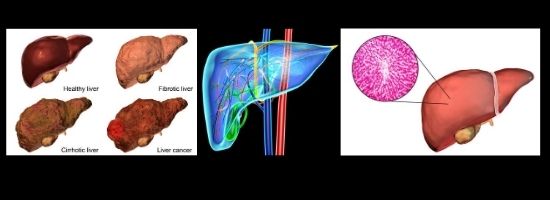
1.1. The primary functions of the liver are:
- Production of bile and its excretion.
- It will Excrete –such as – bilirubin, cholesterol, hormones, and different Drugs which we have intake already.
- Helps for Metabolism –like- fats, proteins, and carbohydrates.
- It is activated Enzyme.
- It’s a capacity to Store-of glycogen, vitamins, and so many minerals.
It is weighing between 3.17 and 3.66 pounds (lb.), or between 1.44 and 1.66 kilograms (kg).
The liver is reddish-brown in colour with a rubbery type texture.
It is situated above Left Stomach and below the Lungs.
Surprisingly the skin is the only organ heavier and larger than the liver.
The liver is roughly triangular in shape.
It consists of two lobes: a larger right lobe and a smaller left lobe.
The lobes are separated by the falciform ligament, which is a band of tissue and that keeps it anchored to the diaphragm.
A layer of fibrous tissue called Glisson’s capsule covers the whole outside of the liver.
This capsule is further covered by the peritoneum, a membrane and that forms the lining of the abdominal cavity.
This actually helps hold the liver in place and protects it from physical damage.
2. 10 Top Function of the liver-
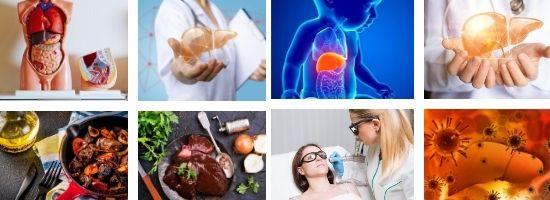
2.1. The major functions of the liver include:

1. Bile production and excretion-
The liver helps the small intestine to break down into parts and absorb Fat, Cholesterol and some important Vitamins.
- Cholesterol
- Bilirubin
- Electrolytes
- And water.
The liver excretes all chemical after proper use.
2. Absorbing and excretion bilirubin-
Bilirubin is formed by the breakdown of haemoglobin.
The iron released from haemoglobin is stored in the liver or Bone Marrow and used to make the next generation of blood cells.
3. Regulating blood clotting-
- Vitamin K is necessary for blood clotting.
- Bile is created in the liver.
- If the liver does not produce enough bile then clotting factors cannot be produced.
4. Fat metabolization-
Liver’s juice breaks down fats foods and then make them easier to digest.
5. Metabolizing carbohydrates-
Carbohydrates are stored in the liver.
Steps of this process-
- First-broken down into glucose.
- Next siphoned into the bloodstream to maintain normal glucose levels.
- Then they stored as glycogen.
- Finally released whenever a quick burst of energy is needed.
6. Storage of glycogen, vitamins, and minerals-
- The liver stores vitamins like – A, D, E, K, and vitamin -B12.
- In some special condition, several years’ worth of vitamins is held as a backup process.
- The liver stores iron from haemoglobin in the form of ferritin, ready to make new red blood cells.
The liver also stores and releases Copper.
7. Helps metabolize proteins-
The liver’s one of the important role is it- helps break down proteins for digestion.
Regulating blood levels of amino acids, which form the building blocks of proteins.
8. Blood detoxification and purification–
The liver filters them and removes toxic compounds from the body.
It removes-
- Hormones, such as as-Estrogen and aldosterone.
- Compounds from outside the body.
- Alcohol.
- Other drugs.
9. Immunological function:–
Resisting infections by producing immune factors and removing bacteria from the bloodstream.
It Acts like-
- It contains high numbers of Kupffer cells.
- They are involved in immune activity.
- These cells destroy any disease-causing agents.
10. Production of albumin-
Albumin is the most essential protein in blood serum.
Question is how it works?
It transports-
- Fatty acids
- Steroid
- Hormones
It will help further to maintain the correct pressure and prevent the leaking of blood vessels.
3. The function of the liver in the Digestive System-
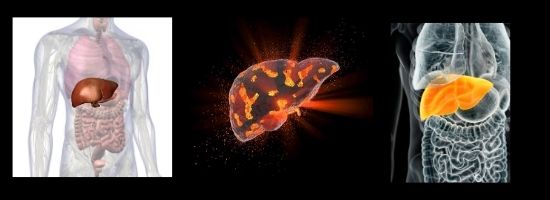
Classed as part of the digestive system.
The roles of the liver-
- Detoxification
- Protein synthesis
- And help to the production of such chemicals that will help to digest our food.
The liver’s primary role indigestion is the processing of nutrients to the next levels that are absorbed by the small intestine.
3.1. Let us discuss –how it works step by step?
1. Creation of bile – which is the chemical that breaks down fats and allows the nutrients within fat (such as fat-soluble vitamins like A, D, E, and K).
2. Next-Storage:
Bile is stored inside the gall bladder, where it is concentrated and then released when needed to digest food coming from the stomach.
3. Send to Small Intestine-
When the small intestine collects the nutrients and they make their way to the liver where they are processed and turned into all the various chemicals the body needs to survive.
The liver also takes harmful chemicals on a regular basis that we consume, such as alcohol, or other chemicals.
The liver detoxifies it and thus helping to protect the body.
4. Liver Disease & Symptoms-

Signs and symptoms associated with liver disease may vary and are dependent upon the exact type of liver disease that is present.
4.1. Here are some prominent examples of Signs and Symptoms of liver diseases-

healthy-myself.com
- Loss of Appetite.
- Jaundice-some symptoms found.
- Abdominal pain and swelling and feeling vomiting.
- Itchy skin, skin rashes sometimes found.
- Dark urine colour.
- Nausea.
- Chronic fatigue.
- Pale yellow or sometimes reddish in colour.
- Swelling in the ankles and legs.
5. Conclusion of Function of the liver-
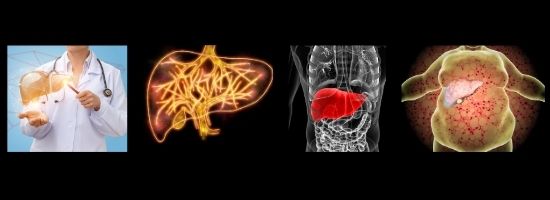
Healthy-myself.com
https://healthy-myself.com/
1. What can help the liver function better and better?
5.1. Follow this thumb rule-
- A. Eat Fibre Foods.
- B. Take Fruits.
- C. Intake Fresh and Cooked Vegetables
- D. Consume whole-grain bread, rice and cereals.
- E. Drink lots of water: It prevents dehydration.
All will help your liver to function better.
You can read from here also- https://en.wikipedia.org/wiki/Liver_function_tests
6. FAQ Session-Function of the liver-
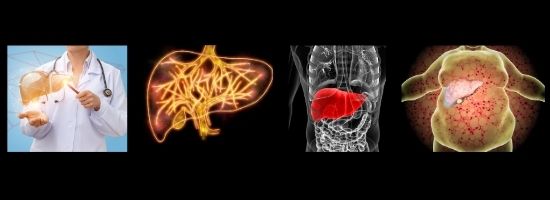
Healthy-myself.com
https://healthy-myself.com/
1. Can you live without a liver?
Very tuff question it is.
While you can‘t live without a liver completely.
But you can live with only part of one.
Surprisingly many people can survive well with just under half of their liver.
2. Which fruit is best for the liver?
Very good and useful question.
Citrus fruits are rich in Vitamin C.
Example of Vitamin Care-
- Lemon,
- Grapefruit
- Oranges
Al is rich in vitamin C content and antioxidants and is known to be powerful liver-cleansers.
They also help to boost the production of liver detoxifying enzymes as well.
3. How can I make my kids liver stronger?
Yes, you can.
Give High-Fibre Diet: Food high in fibre not only helps the liver function properly but also helps it transport fatty toxins out of the body.
Fibre binds to bile in the large intestine for slow and proper digestion.
Give them-
- Vegetables
- Fruits
- Beans
- And nuts
- Water
I think you have enjoyed this Post very much.
Thank you for stay with us.
You can visit my Instagram account also-
Make comments about what will be the next post?
